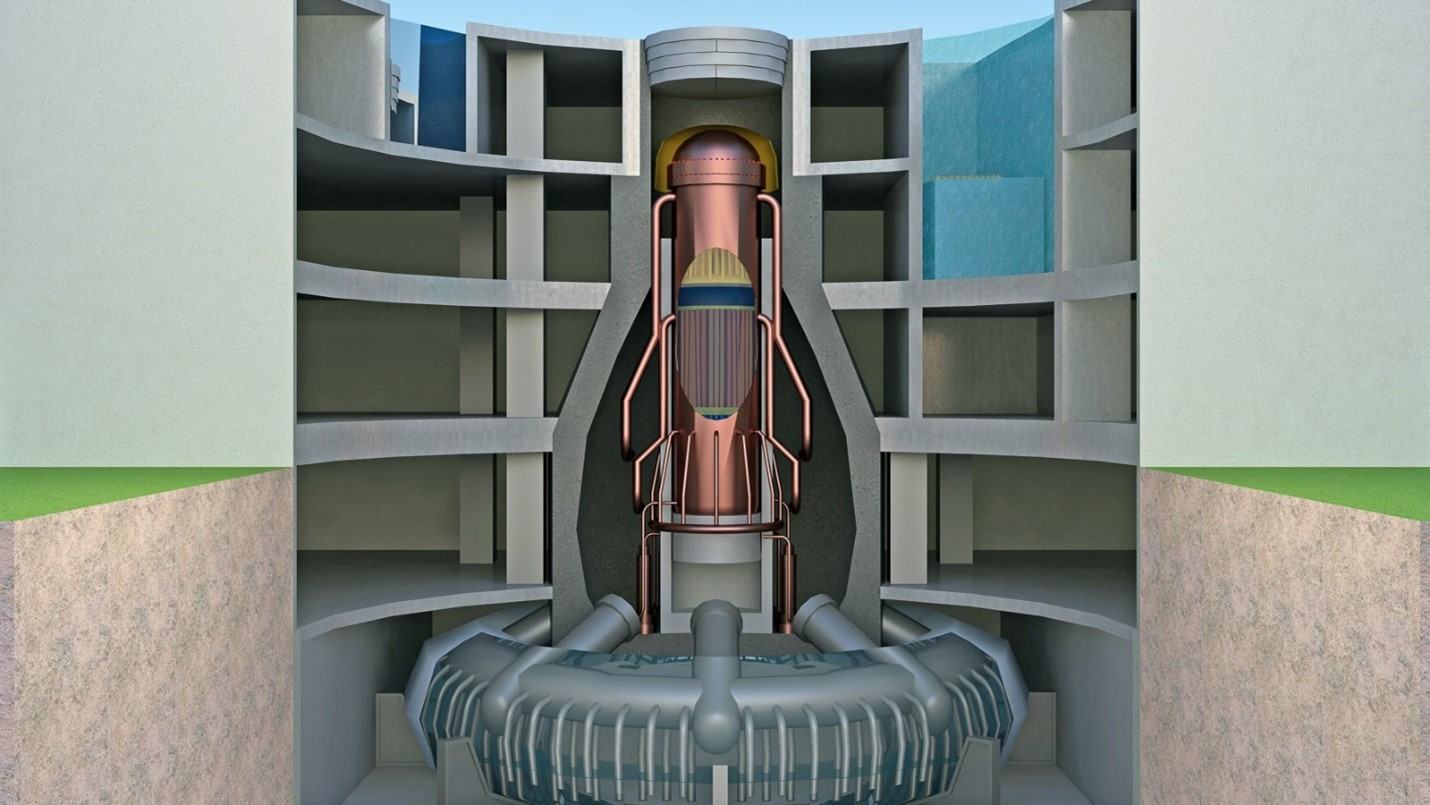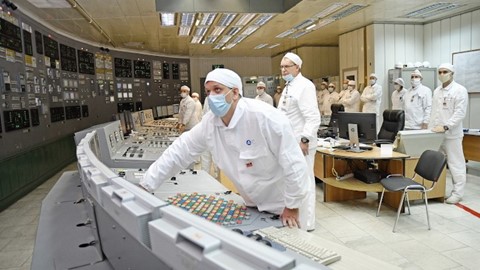Building instrumentation and control technologies into the design of the next generation of advanced nuclear reactors will help the industry meet zero-carbon-emissions goals.
December 23, 2021, 3:00PMNuclear NewsAlexander Heifetz, Matthew Weathered, Nathan Hoyt, Mark Anderson, Scott Sanders, Anthonie Cilliers Kairos Power’s Instrumentation Test Unit
As a source of carbon-free electricity, nuclear energy currently dominates in the United States. However, the light water reactors in the U.S. are approaching the end of their licensed service lives. Meanwhile, low-cost electricity generated by fossil fuel–based sources (such as natural gas) poses an ongoing challenge to the economic viability of commercial nuclear reactors. To enhance the competitiveness of the nuclear industry, we need to bring down the high operating and maintenance (O&M) costs through savings available from utilizing modern, efficient sensing and automation technologies.
The Tihange nuclear power plant in Belgium. (Photo: Electrabel)
Belgium’s seven-party coalition government this morning announced via press conference a tentative agreement to close the nation’s two nuclear power plants by 2025, confirming a commitment made in October of last year when it took office. Plant closures are scheduled to begin in 2022.
A cutaway view of a nuclear reactor. Its construction consists of two essential material types: fuel, which comprises the rods and cores that hold the fuel (center vertical bands); and structural, those parts of the reactor that house the fuel materials. (Graphic: Shutterstock/petrov-k)
Researchers from the Department of Energy’s Argonne National Laboratory are developing a “tool kit” based on artificial intelligence that will help better determine the properties of materials used in building a nuclear reactor.
A worker installing new waste transfer lines between Hanford’s large underground tanks and evaporator facility welds a secondary encasement on one of the lines. (Photo: DOE)
As the Department of Energy's Hanford Site prepares for around-the-clock operations for tank waste disposal, workers at the site's 242-A Evaporator are upgrading equipment used to remove water from the tank waste and the systems that transfer waste to and from large underground containers. The upgrades will also extend the evaporator’s service life.
Reactor operators in the control room at Kursk I-1, as the unit is powered down for good. (Photo: Rosenergoatom)
After 45 years of producing electricity, the first unit at Russia’s Kursk nuclear power plant has been retired, plant operator Rosenergoatom announced on Monday. Kursk I-1, one of the facility’s four 925-MWe light water–cooled graphite-moderated reactors, model RBMK-1000 (a Chernobyl-type reactor), was permanently shut down at 00:24 Moscow time on December 19.
The Summit supercomputer at Oak Ridge National Laboratory began operations in 2018. (Photo: ORNL)
The Department of Energy has announced $9.25 million for research into the behavior and properties of structural materials under molten salt reactor conditions through collaborations using the DOE’s high-performance supercomputers.
The electric power transmission grid of the U.S. consists of thousands of miles of lines operated by hundreds of companies.
To do big things, like building the interstate highway system, or going to the moon, government usually has a plan. Electric companies and grid operators, which are responsible for keeping the lights on, always have a plan. But something unusual has happened in the past few months. About four dozen U.S. utilities, plus the federal government and many states, have promised to do something extremely big: to eliminate carbon dioxide emissions, or cut them drastically. But they are not clear on how.
The young Jimmy Carter, years before his presidency. (Click to view entire graphic.)
Jimmy Carter is trending on Twitter this week because of his ties to nuclear power. Carter, the 39th president of the United States, was a member of Rickover’s nuclear navy about 70 years ago when he was assigned to help in the aftermath of an accident at the Chalk River Laboratory in Ontario, Canada.













